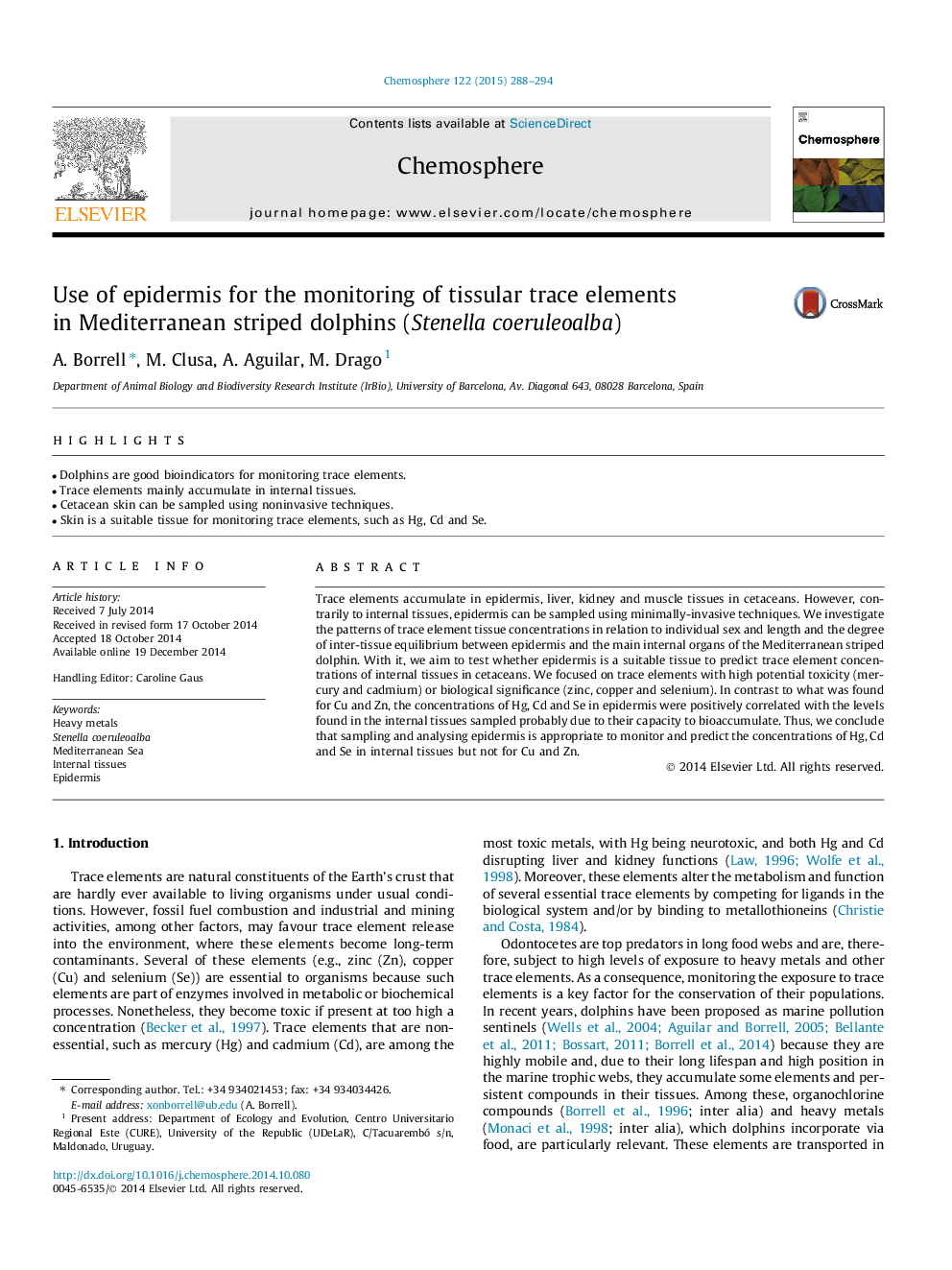| Article ID | Journal | Published Year | Pages | File Type |
|---|---|---|---|---|
| 4408405 | Chemosphere | 2015 | 7 Pages |
•Dolphins are good bioindicators for monitoring trace elements.•Trace elements mainly accumulate in internal tissues.•Cetacean skin can be sampled using noninvasive techniques.•Skin is a suitable tissue for monitoring trace elements, such as Hg, Cd and Se.
Trace elements accumulate in epidermis, liver, kidney and muscle tissues in cetaceans. However, contrarily to internal tissues, epidermis can be sampled using minimally-invasive techniques. We investigate the patterns of trace element tissue concentrations in relation to individual sex and length and the degree of inter-tissue equilibrium between epidermis and the main internal organs of the Mediterranean striped dolphin. With it, we aim to test whether epidermis is a suitable tissue to predict trace element concentrations of internal tissues in cetaceans. We focused on trace elements with high potential toxicity (mercury and cadmium) or biological significance (zinc, copper and selenium). In contrast to what was found for Cu and Zn, the concentrations of Hg, Cd and Se in epidermis were positively correlated with the levels found in the internal tissues sampled probably due to their capacity to bioaccumulate. Thus, we conclude that sampling and analysing epidermis is appropriate to monitor and predict the concentrations of Hg, Cd and Se in internal tissues but not for Cu and Zn.
